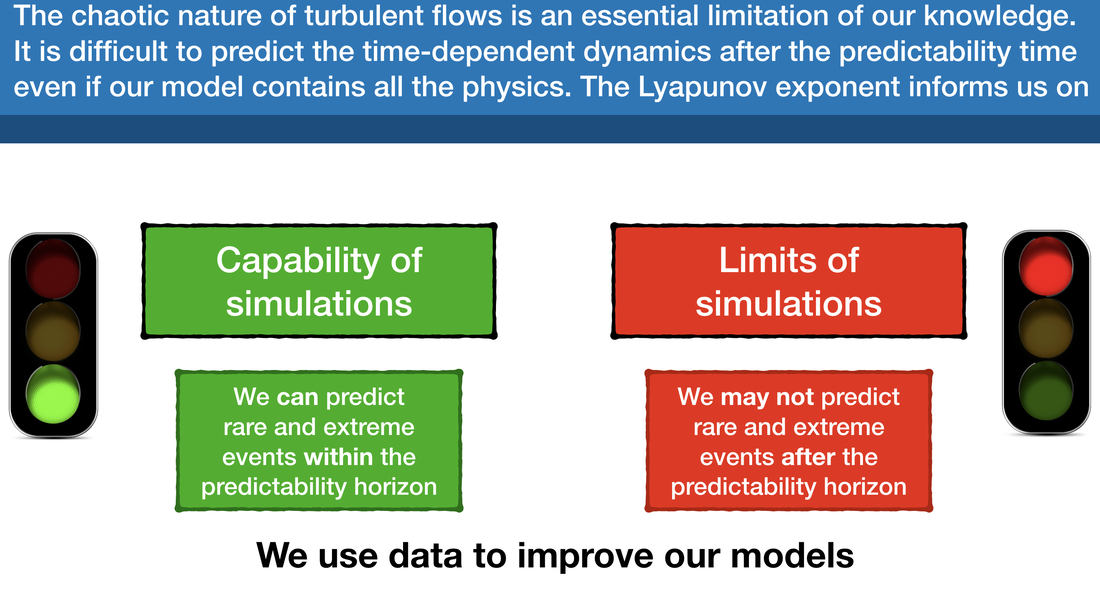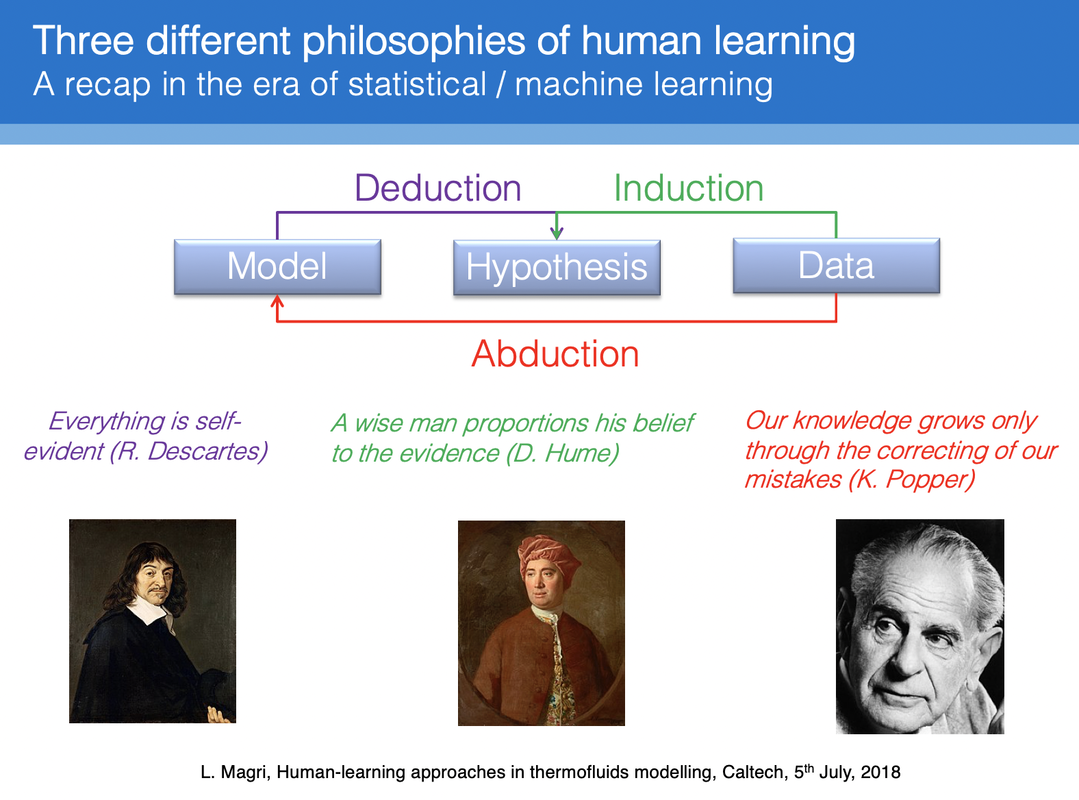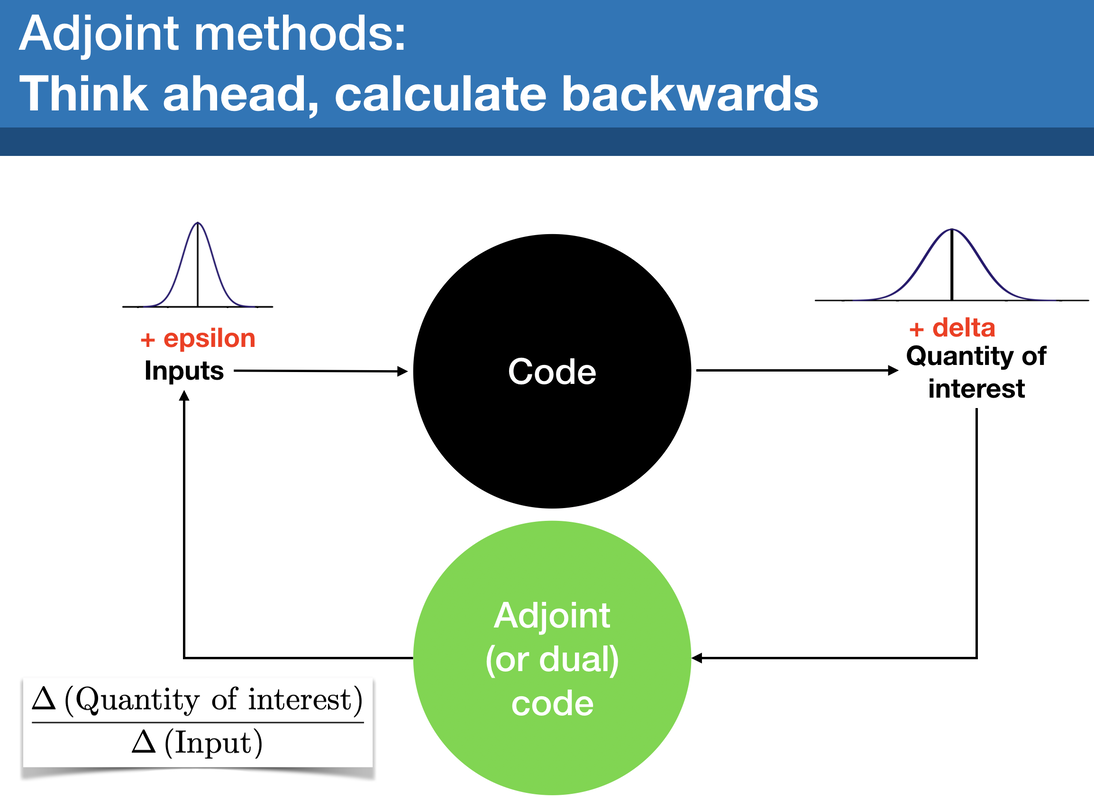Overview

The chaotic nature of many flows, such as turbulent flows, makes the time-accurate prediction of the dynamics very difficult. This is because after a time horizon, which scales with the inverse of the Lyapunov exponent, a little perturbation to the flow equations is exponentially amplified in time. The perturbation can be caused by floating-point arithmetic, numerical schemes, number of processors, parallelization of the code, initial conditions, boundary conditions, parameters, etc.

1. Reduced-order models are practical tools but they have parameter/model uncertainties. 2. High-fidelity simulations are accurate tools but they cannot time-accurately capture rare/extreme events. 3. Data driven methods help combine data with models but we ought not to forget the physical constraints.



